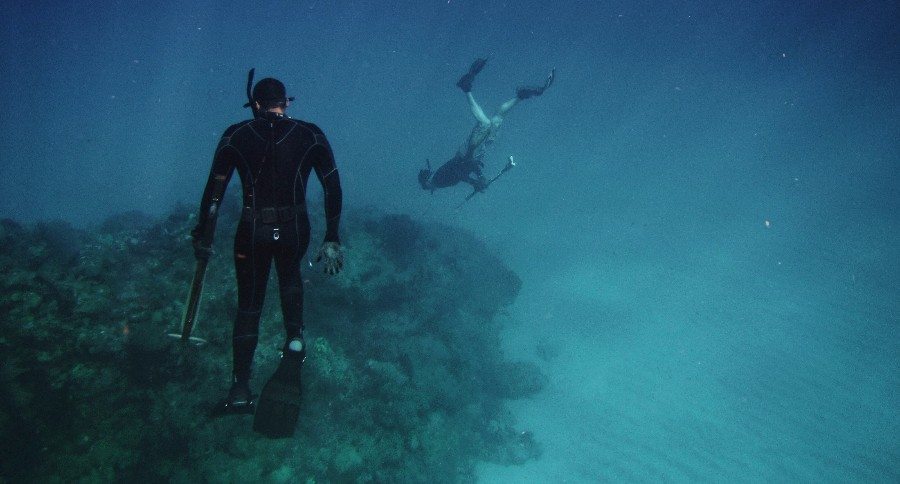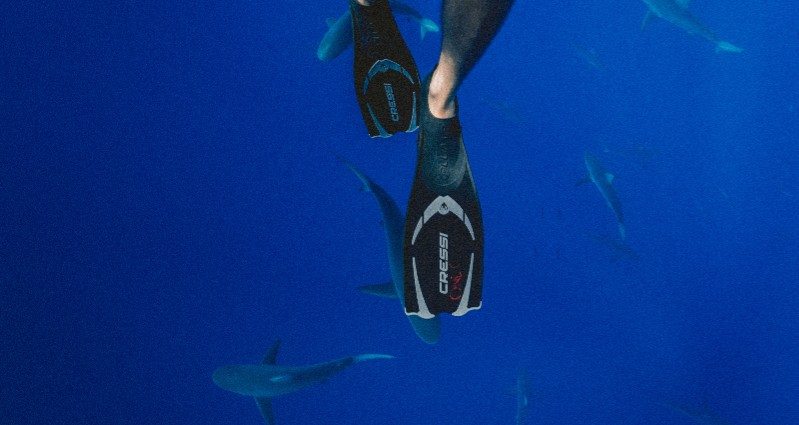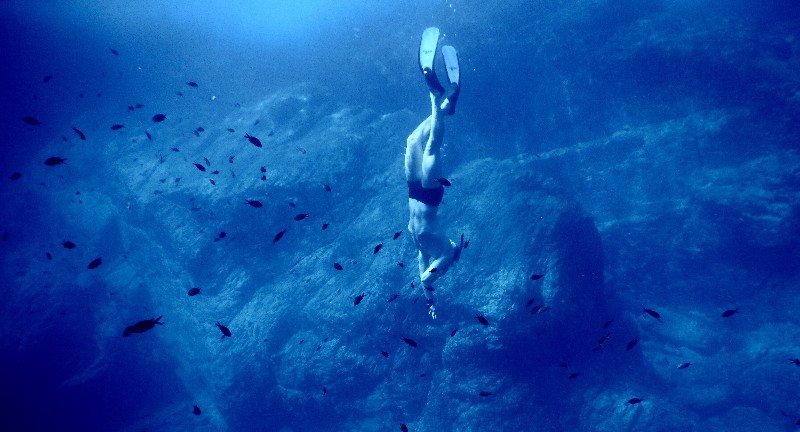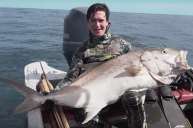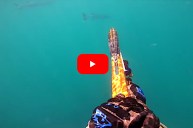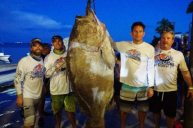Spearfishing has been around in some form or another since the dawn of mankind. Today, it has evolved into a sophisticated sport with an array of options and styles.
You're spearfishing off the coast of Florida. It's bright out and the water is warm. You take a deep breath and kick down below the surface.
Visibility could be better, but it could always be better. You've got just a couple minutes before you'll need to go back up for more air.
You're lucky this time, a shadow in the water fades into view. It's a Yellow Tail. That smooth outline and yellow stripe are a dead giveaway. Fighting the current, you take careful aim and squeeze the trigger at your target fish.
It hits. There's blood in the water. You reel the line in carefully keeping an eye out for unwanted visitors.
Your lungs are complaining, but your face is smiling. You push toward the surface with your prize.
Spearfishing is a challenging experience. It's not for the faint of heart, and requires the sportsman to be in excellent physical condition. In many ways, it truly is underwater hunting.
With many options on equipment and techniques it can be daunting for the beginner to find a way to dive into the sport. This guide is meant as a complete beginner's introduction to spearfishing.
Follow these tips to get started and with practice you'll be a pro in no time!

What is Spearfishing Exactly?
Spearfishing can refer to a wide variety of techniques and practices. The exact means and methods used often depends on where you fish and who you ask. You'll need the proper fishing license, and you'll need to do it only in areas it's allowed.
Generally, spearfishing today refers to fishing with some kind of spear gun underneath the water, either by using scuba equipment or freediving.
How and what to use varies greatly depending on what and where you are fishing. A reef off the California coast is different compared to the Gulf of Mexico, which is different compared to Australia.
Commonly fished species include everything from Yellow Tail, Mangrove Snapper, Grunts, Hogfish, Grouper, Sheepshead, even Lionfish. It can be done alone or in a group, though especially if you are a beginner it's probably better to have someone with you for safety reasons.
You'll also need proper licensing for the area where you are going to be fishing. Be sure to be thorough when looking into licensing, many states have vastly different licensing and permit requirements for very specific regions.
However, the fines and repercussions for poaching via spearfishing seem to be high everywhere!
What Equipment Do I Need?
There are a lot of options out there when choosing equipment (gearheads rejoice!), so I have two pieces of advice for the absolute beginner.
First, if you have someone to teach you how to do it you are probably going to learn on their equipment, so that's what you'll be using. Easy.
Second, if you are trying to get into the sport and don't have someone to show you how, I would choose your equipment based on what kind of fish you are after, and the kind of diving you plan to undertake.
Being able to dive and the methods you use in many ways define how you approach the sport. You may want to look for freediving fins, which are longer, thinner, and more flexible than their scuba counterparts.
Carbon fiber fins may be lighter and arguably give better performance, but they also won't take as much abuse as plastic fins and they won't let you stand on the tips.
If you are new to diving, you may want to cut your teeth on a pair of plastic fins before investing in the more pricey carbon fiber.
The amount of diving gear that you can have is endless, but there are many who spearfish with very minimal equipment.
If you are going to use a tank to dive, you'll need more equipment. A diving mask, the tanks and the necessary accessories, a weight belt, plus a good understanding of how it all works. Scuba gear can add up quickly, but increases the things you're capable of while spearfishing.
If you are freediving, you'll likely still want to at least have a good mask, gloves, a knife, and you will need a diver down flag. This flag lets others know there is a diver below and helps protect you from getting run over.
A fish stringer wouldn't be a bad idea, either. A spearfisherman or woman certainly needs something to keep track of their catch!

How Do I Pick a Spearfishing Gun?
There are a few basic types: Polespears, Band guns, Air-Pressurized/Pneumatic guns, and the Hawaiian Sling. Let the spearfishing gun you use be dictated by what game fish you are going after and what is legal in the area you will be hunting in.
Pole spears require a different technique to operate than the other types, are less powerful, and do not have a trigger mechanism.
Band guns and air pressurized guns are more common and offer the most power. They are akin to a crossbow in that the projectile is held under pressure and released with a trigger.
The Hawaiian sling is somewhere in between the two, offering more power than a pole spear and a more comfortable grip but lacking in a trigger mechanism.
How Can I Practice?
Being a good diver is essential to spearfishing. So before you take up spearfishing, practice diving. Do it in shallow water, and work up, or down to deep water in this case! Scuba diving is an entire skill in its own right, so make sure you're comfortable in aquatic environments well before trying to spearfish.
Luckily, even here in the midwest United States there are many diving schools that will operate out of large swimming pools, or even the Great Lakes if you're up that way. So just because you don't live near the ocean don't think you can't start learning to dive.
Practice the breathe-up technique. Breathe in and expel all the air out of your lungs, pushing hard. Do this a couple of times to expand your lungs and increase the amount of time you have when freediving.
If you do live near a large enough body of water to practice in, you can practice shooting after you learn to dive.
A good method is to sink large foam buoys in the water and practice shooting at those. Practice shooting and reloading, and tieing up the line (pulling it in). If you plan on fishing from a boat, practice pulling up a load with you so you'll be able to get back into the boat with your catch.
What Are the Risks?
Spearfishing is a dangerous sport. Make no mistake. It demands great stamina, a unique set of skills, and means hunting in a perilous environment.
Diving alone provides its own set of risks. Pressure issues can be anything from popping an eardrum to getting the bends. The bends, also known as decompression sickness, is a potentially fatal condition that is caused by coming up from under the water pressure too quickly.
If you dive with a tank, you'll also want to be aware of the risk for Nitrogen Narcosis, also known as the martini effect, or "raptures of the deep". This is a form of poisoning that results in an altered state of consciousness. It can be as mild as a feeling of relaxation to as severe as vivid hallucinations.
The gas mixture in an air tank for diving is typically different than the air mixture we breathe normally. This is because it must operate under pressure and a few additives help to reduce other negative effects.
Switching air tanks and breathing these air mixture under pressure both increase your chances of suffering from Nitrogen Narcosis. So if you start feeling like you've had a beer or two, you probably need to head up.
Drowning, sharks, being hit by a boat or shot by a fellow hunter are other common hazards to also keep an eye out for. So be careful out there!
NEXT: PICKING THE RIGHT DEEP SEA FISHING CHARTER FOR YOUR GROUP
WATCH
https://rumble.com/embed/u7gve.v3v8gx/
